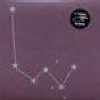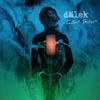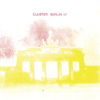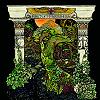- Administrator
- Albums and Singles
 Mirroring the economy, Larsen appear to be undergoing a bit of a recession following many years of seemingly unstoppable growth. On their difficult 8th album (just ask Black Sabbath about that), there is less consistency than there has been in their previous releases. There are still some fantastic moments on this album (not least some wonderful parts with guest vocalist Little Annie Bandez) but they are tempered by some lacklustre pieces which unfortunately drag the album down a notch.
Mirroring the economy, Larsen appear to be undergoing a bit of a recession following many years of seemingly unstoppable growth. On their difficult 8th album (just ask Black Sabbath about that), there is less consistency than there has been in their previous releases. There are still some fantastic moments on this album (not least some wonderful parts with guest vocalist Little Annie Bandez) but they are tempered by some lacklustre pieces which unfortunately drag the album down a notch.
Some of the tracks feel like Larsen are just coasting, the opening piece “Dear Furry Window” sounds like a poor cousin to far better tracks on Play and Seies. This is immediately followed by the marginally better “Tu Ark,” which features some retro sounding synth action which does not totally fit with Larsen’s aesthetic. There is some excellent theremin playing later on in the piece that reaffirms my faith in these Italians. However, it is only by the middle of the album that things really get cooking with “Partial” which features Julia Kent on cello. This sounds like the obvious evolution of the sounds Larsen (and friends) explored on ABECEDA but with a more aggressive edge; Kent sounds like she is trying to saw through her strings.
Little Annie makes an appearance on three songs which all cover very similar territory with varying degrees of success. “Lefrak City Limits” combines all of Larsen’s best elements (a solid, simple melody, drones and powerful drums) and still leaves space for Little Annie to do her thing. Some of the lines are clunky and it goes on a bit long; by the end it feels like it has been playing forever. The other two songs with Little Annie work, “Flower” in particular, shows that the combination of her voice, her lyrics and Larsen’s music has the potential for great things.
After so many strong albums and collaborations, I was let down with La Fever Lit. While by no means a bad album, La Fever Lit does not have the same instant joy that I got with pretty much every album from Play onwards. On first listen, I was downright disappointed with this album but I must admit that it has been growing on me more with each listen. Perhaps it will grow on me over time but as it stands now, this is an uncharacteristically mediocre album from a band capable of far better.
samples:
Read More
- Administrator
- Albums and Singles
 Many (if not most) artists get maybe two albums out before falling into a rut and losing whatever magic they had. In the case of Stars of the Lid, the opposite occurred with their creativity only truly taking momentum a couple of albums into their recording career. This reissue of their debut shows the initial staggering steps that would eventually grow into the sure and elegant music that the duo now creates. This album may be patchy but it is here that the foundations for the unique Stars of the Lid sound are laid down.
Many (if not most) artists get maybe two albums out before falling into a rut and losing whatever magic they had. In the case of Stars of the Lid, the opposite occurred with their creativity only truly taking momentum a couple of albums into their recording career. This reissue of their debut shows the initial staggering steps that would eventually grow into the sure and elegant music that the duo now creates. This album may be patchy but it is here that the foundations for the unique Stars of the Lid sound are laid down.
Though this is far from being the jewel in Adam Wiltzie and Brian McBride’s respective crowns, it is worth listening to this album to hear how the duo have honed their craft; the leap between this and the subsequent album, Gravitational Pull vs. The Desire for an Aquatic Life is a big but logical one. While some of the music feels like a mere sketch when compared with what was to come, it can be clearly heard on pieces like “Before Top Dead Center” that the SOTL magic was present from the start. On “Tape Hiss Makes Me Happy,” the layered and reverbed guitar drones mark the first time that McBride and Wiltzie really gel on record and it marks the highlight of the album.
Unfortunately, Music for Nitrous Oxide is smattered with heavy handed use of sampled dialogue (the human- race-as-alien-seed conspiracy theory bit on “Lagging” sounds especially hokey now). In addition, some of the pieces sound very flat in comparison to the stronger pieces on the album. It sounds like Wiltzie and McBride were still exploring how to create their powerful drones on “Madison.” Similarly, the collage work and looping on the aforementioned “Lagging” sounds clumsy, as if they were still working out how to fully exploit their hardware. Yet when I step back and consider the album as a whole, these flaws do not in any way ruin the album. Music for Nitrous Oxide is still a good album, it just would not be one I would recommend as an introduction to the band.
For those who already own the original release, there is nothing here to warrant buying Music for Nitrous Oxide again. It has been remastered and the sleeve has been changed to a digipack but the differences are not huge (the limitations of the 4-track tape recorder is still obvious but it adds a nostalgic air to the music). Still, it is nice that this is back in print again considering it was the only element in the SOTL back catalogue to be unavailable since the Carte-de-Visite compilation came out in 2007.
samples:
Read More
- Administrator
- Albums and Singles
 It is little surprise that French electroacoustic composer Berangere Maximin's musical path has consisted of both conservatory studies under Denis Dufour and stints in rock and world bands. Her solo debut consists of six works that expound upon the tape manipulations of Pierre Schaefer, but whose sense of drama maintains her contact with the popular musical forms that she has partaken in.
It is little surprise that French electroacoustic composer Berangere Maximin's musical path has consisted of both conservatory studies under Denis Dufour and stints in rock and world bands. Her solo debut consists of six works that expound upon the tape manipulations of Pierre Schaefer, but whose sense of drama maintains her contact with the popular musical forms that she has partaken in.
Maximin clearly has a knack for making the most of her tools. Using only tape and voice, she displays a highly mature sense of patience in her composition, allowing each piece to unfold into its own entity that is ripe with morsels of surprising humor and effect. On the opening title track, she begins by working with water sounds that bubble calmly beneath frozen melodic lines that spread out across the piece as small bits of rhythmic insect chatter emerge from the backgorund. The amount of sound at any given moment is impressive, but more impressive is the fine management of those sounds as Maximin never lets the work become claustrophobic, allowing each individual noise its own space in the mix. As birds come in, a catapult sound initiates an increasingly bustling world that goes from serene New England forest to steaming swampland without a hitch. It is as much James Ferraro as it is Luc Ferrari.
"Boudmo" further explores the organic take that the composer displays. Once she has created her own sonic landscape through field recordings, she concocts a pulse over which guitar strums are allowed to reverberate and punctuate. As assorted hollow sounds and clicks reutrn, the piece exhibits an affinity with the results of chance operation pieces; each moment is given its place and allowed to become an event of great significance.
Maximin herself speaks on the following "Ce Corps Vil, Part one and Part two," reciting sensual French prose beneath metallic caresses and echoed water drops. As her vocal recitations come and go, the background remains near stagnant in mood despite its ever changing makeup. "Voyages Morphologiques," the most overtly songy piece on the album, sees Maximin's world music affinities come to a fore as Afircan style acoustic guitar is melded with snake charming hornlines and folk fiddling, building in momentum as each bit hastens its immediacy to near fever pitch before harp enters to close the work with a wink and a shrug.
Despite the vast accomplishments of previous electroacousticians, Maximin manages to carve out her own corner of the sound. "Si Ce N'est Toi" begins with minimalist rhythmic movements as covered by nearly cheesy synthesized horns as bellows of vocal resonance bounce in the background. With great energy the piece plugs along before slipping down into a furrowed world of industrial static and dissonant pulse before Carl Stalling-like riffs briefly interrupt before allowing the work to subside under its own endless beat.
"La Mecanique des Ombres" closes the album with its longest track, a sprawling entrance into the hull of some ship. Using her sounds in a distinctly musical manner, Maximin uses a Varesian noise-as-compositional tool to create a percussive work whose end result is one of great energy despite the often minute sounds that are used. That the composer can utilize these sounds to create works of strong individual character and impressive emotive depth is a testament to her achievements and further potential as a sonic collagist.
samples:
Read More
- Administrator
- Albums and Singles
 Australian laptopper Mark Mitchell has made an insanely ambitious and hyper-literate psych-pop concept album. Unfortunately, it is also a veritable volcano of twee.
Australian laptopper Mark Mitchell has made an insanely ambitious and hyper-literate psych-pop concept album. Unfortunately, it is also a veritable volcano of twee.
Lily Perdida consists of ten songs about the fictional, faux-folkloric titular character. It is difficult to decipher what exactly Lily's story consists of but I am fairly certain that there is some doomed love, a mining disaster, and possibly some witchcraft. The details are purposely left cryptic. Each song is written from the perspective of a different figure in Perdida's life (The Sister, The Narrator, The Eavesdropper, etc.) and offer differing and obscured post-mortem commentaries on prior events that are never made explicit. Essentially, Mitchell wrote a complicated folktale, then garbled it kaleidoscopically to create an enigmatic meditation on identity, the nature of truth, and perspective. As if that wasn't enough, the lyrics are frequently impenetrably complex ("All the while the copy in his mind that can stay every side has partial proportion and odd space and time.") and follow a dialogue-heavy Greek tragedy structure (there is even an omniscient chorus).
Mitchell is clearly a skilled and inventive multi-instrumentalist and arranger. While the songs are generally piano-based, Lily Perdida is packed with xylophones, organs, horns, backwards guitars, violins, and probably all kinds of other shit that I was unable to identify. It is remarkable that Mitchell made this album on a laptop, as the wall of sound he creates does not sound at all like the work of a solitary man and a computer. It is equally impressive how skillfully he juggles so many tracks and instruments with such clarity. Unfortunately, the trade-off to his exactitude is that the album is burdened with very smooth production that considerably mutes its impact. Also, Lily Perdida seems to suffer from the same flaw that ruined Of Montreal's Skeletal Lamping—way too many ambitious musical ideas to be forcibly crammed into just one album. The concept of space is woefully underdeveloped here.
The opener ("Lull For Dear Life") is one of the stronger, most melodic tracks and is the first of many duets between Mitchell and guest-vocalist Ellen Carey. Their vocals harmonize nicely and the song builds steadily as new elements are incorporated (xylophones, trumpets, layered backing vocals). It's astonishing that any of these songs are melodic and catchy at all, given that the lyrics resemble Homeric verse more than contemporary songcraft. "It's Here The Story's Straight" also starts out very promisingly with a warm organ riff and some cool off-beat ride cymbal, but rapidly becomes too saccharine and fluffy for my taste. Another track that stands out is "The Infinite Orphan." Its retro organ riff, bongos, and wah-wah guitar solo would not sound out of place on a Nuggets compilation. I believe there's even some righteous glockenspiel on display here too.
I cannot begin to imagine how long it must have taken Mitchell to conceive, record, and edit this album. Consequently, it is somewhat heartbreaking for me to say that I really didn't like it at all. In fact, I had a very difficult time making it through the whole thing in one sitting. Aside from the overproduction and the inherent impossibility in making something moving and enjoyable out of such an inviolably dense thicket of words, Lily Perdida just sounds cloyingly lightweight. When Carey is involved, the resemblance to a psychedelic poor man's Mates of State is particularly acute. Without knowing the album's backstory or seeing the lyrics, these songs could easily be mistaken for the work of any number of other bands. Granted, Mitchell is much more ambitious with his instrumentation than most, but this album has no immediacy, sharp edges, or relatable songs.
Samples:
• Lull For Dear Life
• It's Here The Story's Straight
• The Infinite Orphan
Read More
- Administrator
- Albums and Singles
 This is space opera at its finest. (As in the subgenre of science fiction literature where tales of romance and dare doing heroes fight power hungry villains and alien monsters, all set against the backdrop of the stars.) There are no ear splitting sopranos singing in German on this record, but sultry vocals cooed into a microphone over gorgeous synth lines and hypnotic guitar riffs. This was the perfect band to sit down and listen to as I waited for my flight to arrive inside a dimly lit spaceport bar.
This is space opera at its finest. (As in the subgenre of science fiction literature where tales of romance and dare doing heroes fight power hungry villains and alien monsters, all set against the backdrop of the stars.) There are no ear splitting sopranos singing in German on this record, but sultry vocals cooed into a microphone over gorgeous synth lines and hypnotic guitar riffs. This was the perfect band to sit down and listen to as I waited for my flight to arrive inside a dimly lit spaceport bar.
Like a lavish valentine, with a star map of the constellation Cassiopeia on the front (personally signifying the influence of destiny on lovers crossing paths), and beribboned on the back with a heart sealed in hot silver wax, the package itself received the same caring attention and treatment as did the music inside. As with the soundtrack work of Current 93, Celestina was also conceived as music to accompany a short story. The subject matter in this case isn’t the claustrophobic worlds of a Thomas Ligotti or decadent Count Stenbock, but a tale of love, lust and betrayal scripted by 17 Pygmies lead man Jackson Del Rey himself. Like Jackson’s namesake (editor and author Lester del Rey), his story would find a fitting home amongst a pile of yellowing and well thumbed paperbacks from sci-fi’s Golden Age.
Initially inspired by the 15th century Latin novel La Celestina, the next link in Jackson’s associative chain of inspiration came to him upon reading the headline “Nasa astronaut Lisa Nowak charged with attempted murder in bizarre love triangle.” What emanated from his pen is an enjoyable story playing on the tropes of the genre, just as the music enclosed gives a psychedelic tribute to the 1950s-60s science-fiction motion pictures soundtracks it evokes. Downloadable as PDF from a web address disclosed in the liner notes, my only complaint about this release is that the story was not included with the rest of the beautiful package.
The score is an exceptional one and not only stands on its own feet, but in its own corner, apart from the crowd. The band does so to their own advantage, never rescinding on the vision that is integral to their surf infused psychedelic sound. The lasting power of this music will outlive the bands who spawn stale fads.
The first track of eleven on Celestina is reminiscent of a movie’s opening credits; with delicate guitar work and dreamy synth lines, it prepares me for the coming voyage to the Grand Nebula. Meg Maryatt, the lead female on vocals, (a slight change of lineup since their last 13 Blackbirds/13 Lotus release) makes her appearance on the second song. Her scintillating question, “Could this be heaven?” forms a smoky refrain we hear reprised later in the album.
Track five is an epic freakout describing the disastrous collisions that sometimes occur in the shadowy depths of deep space -an asteroid or errant satellite slams into the body of the Celestina like the throbbing drum hits punctuating the ears. Breathy vocals saunter in, a soft rattle hovers around a tightly woven ominous bass thrum, and a screechy high-end guitar is manically picked, like someone laughing from inside a padded cell. Meg sings out “Somethings wrong,” like a warning, like a siren.
The keyboardist sends out shooting stars that wisp and whiz by, diffusing the harried moments in a warm synthesized aura. The afterimages fade with plucked harpsichord guitar trills. Squiggles of computer hiss emerge, as if the machines on board are breaking down.
Perfectly spaced tings on a bell issuing from the right speaker begin track ten; a telegraph pulse responds from the left. This is the kind of music I could drift into a black hole listening to. No longer tethered to the spacecraft, catapulted out by a jealous lover, I am gradually pulled in by a majestic chord. My supply of oxygen is running out and when the synth comes to its abrupt halt, I know I’ve taken my last breath.
samples:
Read More
- Administrator
- Albums and Singles
 Colossal Yes is the quixotic side project of Comets on Fire drummer Utrillo Kushner. According to Kushner, this album was inspired by New Zealand indie rock bands like The Clean, The Verlaines, and The Tall Dwarves. Oddly, this influence appears to have had only a marginal effect on the band's sound, as they still most closely resemble the mellow '70s rock of The Band.
Colossal Yes is the quixotic side project of Comets on Fire drummer Utrillo Kushner. According to Kushner, this album was inspired by New Zealand indie rock bands like The Clean, The Verlaines, and The Tall Dwarves. Oddly, this influence appears to have had only a marginal effect on the band's sound, as they still most closely resemble the mellow '70s rock of The Band.
For this project, Kusher leaves the drum duties to the very capable Garett Goddard (Howlin' Rain) and devotes himself entirely to singing and playing the piano. He is also aided by Howlin' Rain guitarist Eli Eckert and Ben Chasny (Six Organs of Admittance), who handles mixing duties and plays on the instrumental "Permafrost Drip." The music, as alluded to earlier, is unabashed and unironic '70s rock worship and the trio do an impressive job covering the various tropes of the genre. The band's Achilles' heel, unfortunately, is Kushner's workman-like vocal performance. While his singing is not necessarily "bad," it is generally flat and unengaging. That is a troubling obstacle for a band that is largely dependent on the strength of its hooks (there is no focus on innovation or raw power).
That said, Colossal Yes possess a certain shaggy charm and the album has many pleasant moments. "They Feast On Us/We Feed On Them" opens with canned crowd noise, which is an apt harbinger for the arena rock piano balladry that follows. The rhythm section has a lagging, languid feel which suits Kushner's vocals quite well. Also, there is a recurring flute motif that serves as a memorable and effective hook. It's probably the best song on the album, primarily because Kushner's vocals tend to get overwhelmed when the band is at their normal degree of intensity. The closing "Smoldering Steeps" is similarly successful for the same reason. "The Fraudulent Singer," a fairly jaunty pop song with fuzzed-out bass and insistent double-time drums (before ending with a shredding dual-guitar solo and wild drum fills), is one of the few times on the album where the Kiwi indie rock influence is readily apparent.
However, that influence seems to have manifested itself in other ways. For example, this album is more guitar-based than its predecessor (Acapulco Roughs) and the production seems a bit more raw/lo-fi. Most importantly, Kushner has jettisoned meandering epic song lengths and generally adheres to a tighter and punchier three-minute pop song structure.
At this current stage in their career, it seems unlikely that Colossal Yes will make much of an impact, as people who are enthusiastic about '70s piano rock do not seem like the sort of people who will make the effort to discover semi-obscure new bands. Also, there is nothing particularly exceptional about this album. It is merely competent and intermittently enjoyable. However, Charlemagne's Big Thaw is certainly a step in the right direction and the harmonized dual-guitar solos and flute interludes are often endearing (both occur several times). If Kushner's vocals and songwriting continue to evolve, this could turn into something quite significant. Until then, Spirit and The Band can safely remain unconcerned about their genre dominance being threatened.
Samples:
• The Fraudulent Singer
• A Ballad Is The Air That You Breathe
• They Feast On Us/We Feed On Them
Read More
- Administrator
- Albums and Singles
 Dälek unleash industrial-strength beats, layers of juddering ambience, and a fierce verbal polemnic. Gutter Tactics matches rough, suffocating production to brutal subject matter. A few piano figures provide relief but the general mood of uncompromising defiance is signalled by the cover depiction of a lynched human recreated as a mtuant, and an opening track sampling Reverend Jeremiah Wright.
Dälek unleash industrial-strength beats, layers of juddering ambience, and a fierce verbal polemnic. Gutter Tactics matches rough, suffocating production to brutal subject matter. A few piano figures provide relief but the general mood of uncompromising defiance is signalled by the cover depiction of a lynched human recreated as a mtuant, and an opening track sampling Reverend Jeremiah Wright.
The new album opens with "Blessed Are They Who Bash Your Children's Heads Against A Rock," a track which should attract plenty of attention. It features Rev. Wright in combination with a slippery beat allowing plenty of space for his exact meaning to be heard. Either Wright is a great orator and Dälek have followed the rhythm of his speech or the gaps between his words have been cut into a suitable beat. Either way, the track perfectly flips the phrase "blessed are the peacemakers" into something quite different. Reverend Wright runs through a list of terrorist attrocities: Europeans seizing the USA from the Native American population; the kidnapping and subjugation of African slaves for labor; and dubious US military and foreign policy actions. It is the usual tale of blood, sweat, and tears in the cause of creating and defending our shopping malls, highways, and suburbs. There's no disputing the facts, just the interpretation. Wright cleverly says "we" to invite shared responsibility and punctuates his scorching diatribe with the word "terroism".
There's no topping the power and brevity of that track but there's plenty more combustive power on Gutter Tactics. "Street Diction" combines glistening, jangling detritus with thud and doom but the vocals are sometimes less audible than I'd like. When the musical radiation cloud clears a little, it's for a namechecking solidarity with other artists. A certain irony, since, as with Burial, the sound suggests humans coping with alienation, but projects an infectious isolation. This is music to be heard while alone. I suspect that even in the booming cars and at gigs these rythyms and rhymes do not create togetherness.
"A Collection of Miserable Thoughts" is lighter than much of this album but the words are a preemptive strike for artistic independence. Not as extreme as The Residents' manifesto of pure creation but the line "wasted breath or testament to the downtrodden" lays the stance out nicely. Dälek aren't really pushing the envelope on Gutter Tactics merely refusing to back down, apologize, or quit. The cover art shows a shadowy lynching, the afoementioned mutant, and NYC's Ground Zero; clear connections between a history of brutality and (what Rev. Wright calls) "chicken's coming home to roost." Thematically, "Los Macheteros/Spear Of A Nation" broadens the grievances beyond the USA by plucking barbaric incidents from the history of South Africa's apartheid regime.
Gutter Tactics is far from being preachy and heavy handed and it's quite possible to enjoy the disc without knowing "who Medgar Evars is". But the clues by which to appreciate these pieces in an broader historical and political context are here for those who wish to explore. That said, the lyrical content is not always impressive. "We Lost Sight," for example, is a dangerously seductive track, but when it's nearly done and the beats peel away all that's being said is: "We lost sight of how to use these mics/what scripts we write/how to choose the fights." The track is choppy and spry, but I can't work out if the message is aimed at other artists or at political figures. If it's the latter, then the unrepentant figure of the recently departed G.W. Bush naturally comes to mind, as do the words of Auden.
"Perfection, of a kind, was what he was after,
And the poetry he invented was easy to understand;
He knew human folly like the back of his hand,
And was greatly interested in armies and fleets;
When he laughed, respectable senators burst with laughter,
And when he cried the little children died in the streets."
samples:
- Blessed Are They Who Bash Your Children's Heads Against A Rock
- A Collection of Miserable Thoughts Laced with Wit
- Street Diction
Read More
- Administrator
- Albums and Singles
 Historically speaking most musical reunions are, to be polite, lacking. More often than not the group's are well past there prime, and appear to be doing little more than either seeking a paycheck or reclaiming their past glories as pop culture icons. That Hans-Joachim Roedelius and Dieter Moebius' recent Cluster reunion exudes none of these qualities is not so much surprising as it is encouraging. The duo's artistic integrity can hardly be called into question after their near 40-year career, even as they are in a position to exploit their earned roles as godfathers of experimental synth music. Yet Berlin 07, a document of their first show in the city since 1969, displays the duo in fine form as they broaden their legacy by continuing to create vital and challenging music.
Historically speaking most musical reunions are, to be polite, lacking. More often than not the group's are well past there prime, and appear to be doing little more than either seeking a paycheck or reclaiming their past glories as pop culture icons. That Hans-Joachim Roedelius and Dieter Moebius' recent Cluster reunion exudes none of these qualities is not so much surprising as it is encouraging. The duo's artistic integrity can hardly be called into question after their near 40-year career, even as they are in a position to exploit their earned roles as godfathers of experimental synth music. Yet Berlin 07, a document of their first show in the city since 1969, displays the duo in fine form as they broaden their legacy by continuing to create vital and challenging music.
The album is broken into two sets, each clocking in at nearly a half hour. The first few seconds are a seeming call to arms for the duo, as a thick drone is topped by a near sountrack-worthy big band phrase before it slinks back in favor of the taught electronic improvsations that the duo has become known for since their classic Cluster 71 was released over 30 years ago. As huge swathes of air wipe across a frozen drone line, it is immediately clear that the duo has lost none of their patience. Bell like chimes soon loop in as a rhythmic bongo-like pulse urges the work forward.
Cluster have always had a knack for working around rhythmic motifs without allowing them too strong a hold on the progression of a piece. As the pulse slinks away it is replaced by hollow, water-logged vaults of sound that glisten atop one another. Clouds of fertile gestures emerge and present themselves before slinking back, creating an unnerving environment that never becomes creepy for creepy's sake. Rather, their sound is more reminiscent of a night swim with blue whales as giant bodies of tone lazily drift by in the dark while glowing crustaceons sway in the tides. It is a beautiful space, in line with Cluster's previous work without being a mere rehash of previous material. Sampled, near dancey beats enter and exit as the sound moves toward that of saws and metallic echoes ceaselessly evolving.
The second half of the performance explores similarly paced material as Cluster continue to display their adept musicality, beginning in an eighties style electrobeat that creeps along as synth moves swirl about on top. Again, Moebius and Roedelius are able to move from area to area without ever losing momentum. Gestures are looped over one another only to be replaced by others. That loops will disintegrate with ease and leave nothing lacking in the overall effect reveals the capabilities of these master improvisers. Never is one area sanctioned off from its neighboring parts by any definitive marker--rather, the different areas bend through one another, morphing with organic ease.
As bells harken the demise of the beat, the second part enters into the same snaking and aimless waters that have influenced so many over the years. Yet despite the ample achievements of disciples whose work has helped shape as stylistically broad genres as noise, industrial, techno and rock, Cluster again show their work to be unique in its successful fusing of aesthetics that only later would be explored individually. Berlin 07 is an album that not only strengthens this assertion; it continues in shaping its legacy.
samples:
Read More
- Administrator
- Albums and Singles
 As far as I'm concerned, the Incapacitants are THE best noise band to ever come out of Japan. While they aren't as prolific or esoteric as some of their contemporaries, they've consistently been responsible for some of the most complex, chaotic, loud, and downright fun releases in the genre. Here, almost all of their cassette recordings have been complied into a lavish, lovingly presented 10 CD box set that stands up proudly with any other large-scale reissue release, and the material sounds as fresh today as it did some 10 to 15 years ago.
As far as I'm concerned, the Incapacitants are THE best noise band to ever come out of Japan. While they aren't as prolific or esoteric as some of their contemporaries, they've consistently been responsible for some of the most complex, chaotic, loud, and downright fun releases in the genre. Here, almost all of their cassette recordings have been complied into a lavish, lovingly presented 10 CD box set that stands up proudly with any other large-scale reissue release, and the material sounds as fresh today as it did some 10 to 15 years ago.
It’s hard for me to not speak in hyperbole when discussing this set. Rather than focusing on esoteric artsyness (e.g. Aube) or clichéd serial killer and prostitute murders (early Whitehouse and a large proportion of US noise bands), the Incaps are just two regular guys who, after their white collar jobs are done, like to get together, crank up the homemade electronics, and have a seizure of fun behind the mics. Any Youtube search of their performances will make this painfully obvious: they dance, they wrestle, they jump around, and it all looks like a hell of a lot of fun. The best thing about the actual output from these guys is the sheer complexity of sound. As far as noise artists go, few can match their dynamic, layered sound that each subsequent listen reveals some new sound or tone that didn’t seem to be there before.
Presented here are seven of their early cassette releases, spread across ten discs: Stupid is Stupid (one studio and one live disc), Extreme Gospel Nights, Ad Nauseam (originally three cassettes: one of Fumio Kosakai solo, one of T. Mikawa solo, and a collaborative live tape), D.D.D.D., The Tongue, Cosmic Incapacitants, and I, Residuum. The Incapacitans sound is a consistent one: layer upon layer of overdriven electronic noise above which the two salarymen take turns shrieking or growling into a microphone. That’s not to say there aren’t subtle variations: a comparison of "Stupid is Stupid" and "Don’t Sleep While We Explain" from the first disc alone show this: the former is all low end crunch and occasional death metal guttural growls, while the latter is more high frequency tones, siren textures, and higher pitched shrieks.
Comparing the studio and live recordings it's quite obvious the band isn’t spending a lot of time in the studio in post-production or multitracking, but the feel between the two is distinct. The natural reverberations and different environments create a different sound in the live setting: the Stupid is Stupid live tracks allow much more of the vocals through, the chattering electronics still there and forceful, but the voices not as buried. The live disc of Ad Nauseaum is a different beast entirely: lots of static and ambient noise makes it feel more like a crunchy, grimy bootleg recording (in the best possible way).
The solo discs also show the separate parts that make the whole of the band: Mikawa's disc is all sustained metallic industrial roar, while Kosakai's is more idiosyncratic, the first track "Technodelicatessen" being a goofy pisstake on dance music that could be a lost Front 242 remix, while the closing “Into Another’s Doom’s Pain” is muffled raw power electronics and divebomb tones mixed with some bizarre vocalisms. One of the more dramatic shifts is in the latter portion of these discs. Cosmic Incapacitants is an appropriately titled release, because it filters the boys' usual din through a mess of flangers, echos, and phasers to give a distinctly 1960s sci-fi meets psychedelic substances feeling, even more so than Kosakai’s other band, C.C.C.C., ever did.
Lasse Marhaug and his PicaDisk label must be commended for the presentation of this work. All ten discs are in their own individual sleeves reproducing the original cassette artwork, or in the case of the oddly packaged Ad Nauseaum and Cosmic Incapacitants, detailed photos of the original releases, and it comes with a great 40 page booklet featuring liner notes by Mikawa and Kosakai, as well as Yoshihide Otomo and Jim Sauter of Borbetomagus, and some photos of the band at work. It’s obviously something done out of a love for the band, and it shows.
Not to sound elitist here, but this isn’t the kind of thing that will appeal to people who have heard "a Merzbow disc or two" or "that Wolf Eyes album on Sub Pop". It's aimed more at the established noise fan who knows their Masonna from their Government Alpha. But, for anyone with an inkling of interest, it's a wonderful time capsule from the Golden Age of Japanese Noise that anyone can enjoy.
samples:
Read More
- Administrator
- Albums and Singles
 Although it'll probably get the most attention for the participation of Sunn O)))'s Stephen O'Malley, this is much better looked at as an ensemble work that lacks overly sustained guitar drone in place of a bleaker, more complex atmosphere that, along with the vocals of Anok Pe David Tibet, conveys darkness in a more subtle, but equally as menacing way.
Although it'll probably get the most attention for the participation of Sunn O)))'s Stephen O'Malley, this is much better looked at as an ensemble work that lacks overly sustained guitar drone in place of a bleaker, more complex atmosphere that, along with the vocals of Anok Pe David Tibet, conveys darkness in a more subtle, but equally as menacing way.
A collaboration between the aforementioned O’Malley and Tibet, along with Vincent De Roguin (Shora) and Daniel O’Sullivan (Guapo), is a bizarre mix of kraut rock influenced dark mysticism, with a healthy dose of free jazz chaos and bleak dark ambient passages. The disc’s opening barrage of amphetamine fueled free jazz dual drumming over ominous electronic drones, coupled with the occasional metallic crash or bang. The drums continue along with processed organ stabs and creepy bells before the chaos drops out entirely.
The remaining portion of the first (of four untitled) tracks is left with sweeping symbol crashes, bells and Tibet’s vocals, which are more musical and less abrasive than much of his work with Current 93, but perfectly matches the demonic bleakness of the music. The drums actually stay mostly out of the mix for the remainder of the album, rather than aggressive, the music prefers to lurk.
The second piece opens with some bangs and clatters, sharp feedback bursts, and heavily effected ambient tones, much more sparse than the opening track. However, while it lacks the chaos of the first track, it does stay menacing, growing even darker with deep synths, bells, and chanted vocals. Tibet’s traditional vocals that appear near the end are double tracked, the slightly off-kilter sequencing of them only adds to the creepiness.
Part three begins in a similar way, hard panned stuttering percussion like unseen beings closing in from all directions, but just out of sight. The buried, pained vocals complement the dramatic piano and organ flourishes, the vocals eventually being cut up into fragments that resemble swarms of locusts, eventually letting the drums swell back up into the mix.
The final track clocks in at half the length of the previous ones, and closes the album with sustained ambient tones, soft vocals, and mangled guitar and organ tones. It is a fittingly dark and menacing ending to an apocalyptic album that leans towards more of David Tibet’s flirtations with the imagery instead of Stephen O’Malley’s…rather than maximalist dark noise and chaos, it is the subtle creepiness that colored Current 93’s best work that is more characteristic of this.
samples:
Read More
- Administrator
- Albums and Singles
 Scott "Wino" Weinrich (no relation to the band also being reviewed this week by Creaig Dunton) has been in many groups over the years. Saint Vitus, The Obsessed, Spirit Caravan and The Hidden Hand. After a couple of decades moving from one classic doom band to another, this is first time releasing an album under his own name. The formation of a new band for these sessions has worked to his benefit as this is a return to form after a few years in a songwriting wilderness.
Scott "Wino" Weinrich (no relation to the band also being reviewed this week by Creaig Dunton) has been in many groups over the years. Saint Vitus, The Obsessed, Spirit Caravan and The Hidden Hand. After a couple of decades moving from one classic doom band to another, this is first time releasing an album under his own name. The formation of a new band for these sessions has worked to his benefit as this is a return to form after a few years in a songwriting wilderness.
One thing that holds true for Wino after all these years is that he does not surprise his listeners. Every album by Wino’s various bands sounds roughly the same; his style has changed little since his time in Saint Vitus. Yet despite this tendency towards a standard, the quality of the music still varies wildly from release to release. For example, Wino’s last band, The Hidden Hand, started out strong and ended up fairly flaccid by the end without really evolving musically. With Punctuated Equilibrium, the musical template still has not changed (this could have been recorded 20 years ago) but the passion has returned. The riffs here are huge, the solos are like lasers and Wino’s vocals sound more energetic than they have in years.
There is a good mixture of straightforward songs like the title track (I never thought evolutionary theory would make a good song but Wino makes it work) and pieces where the band just grooves and lets Wino loose on the guitar. “Wild Blue Yonder” features some fantastic wah-wah solos from Wino’s magic fingers. “Secret Realm Devotion” combines the best of Wino’s songwriting and guitar playing (although the chorus is a bit wobbly); there is some seriously killer riffage and soloing going on here.
It's great to see Wino back firing on all cylinders; Punctuated Equilibrium is one of the best things he has put his name to in a long time (which explains why his name is now so prominently displayed). All the classic Wino ingredients are here but the music never sounds as antiquated or as worn-out as The Hidden Hand did towards the end. This is a no-nonsense, no-frills beast of a metal album, just Wino doing as he does best and it is great to hear him sounding like he is having fun again.
samples:
Read More

